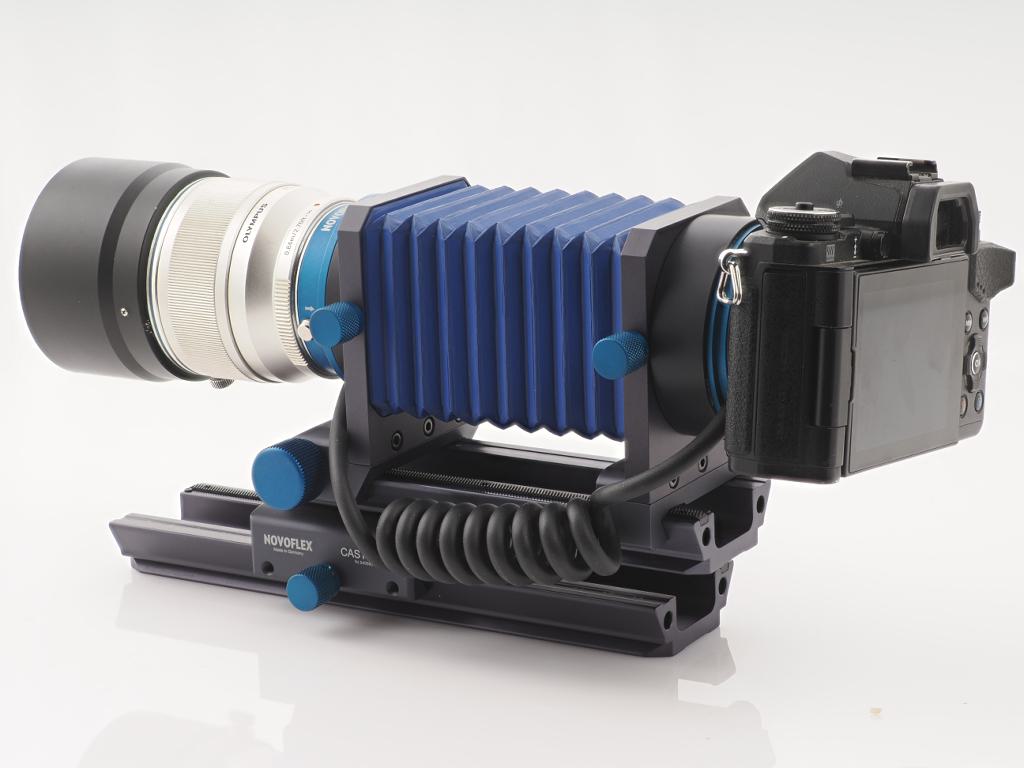
Novoflex has built a bellows for mFT, with mFT connections at the front and rear. Here you can see the Apparillo with a 75mm at the front and an E-M5II at the back and a Novoflex Castel-QP at the bottom. This is the Arca-Swiss sled hanging on the bottom.
It has lots of knobs, with the large knobs for adjusting and the small knobs for fixing. As you can see, you can also turn the two bayonet mounts and then fix them in the new position. (The fact that the E-M5II sits at an angle is intentional, so you can see that).
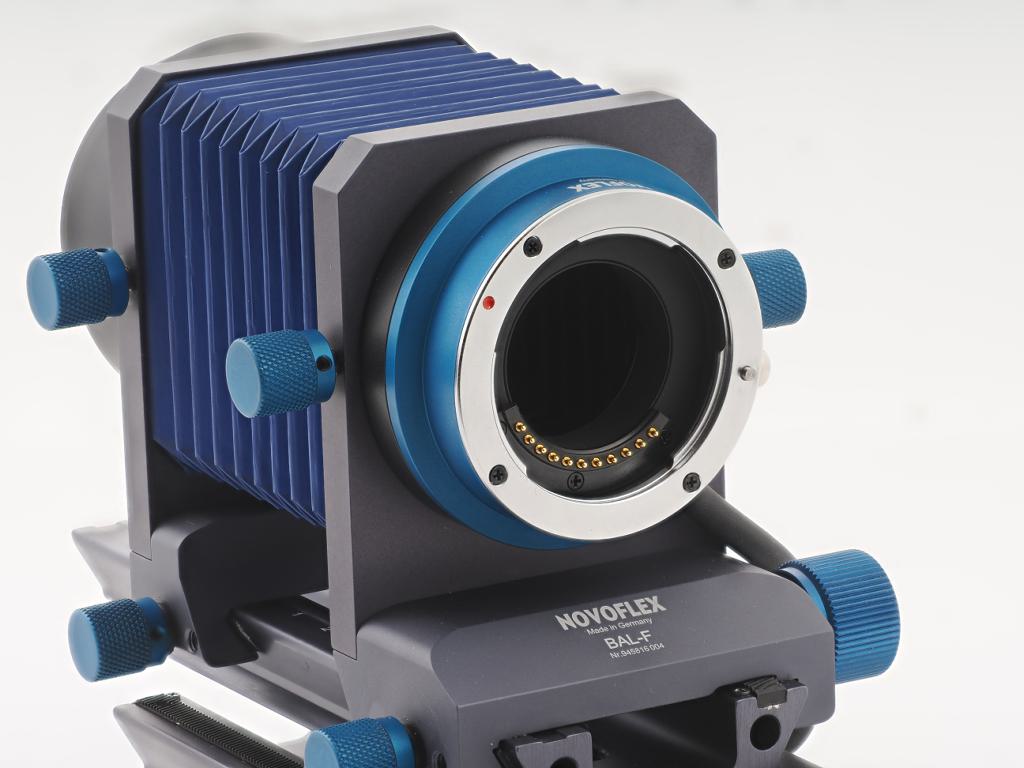
Just when you think you’ve got one of those things you can tilt and shift with… No. That was the Castbal T/S90. It no longer exists, the successor is now the Balpro T/S. This here is the BAL-F. The BAL-F can adjust the bellows very precisely and with the Castel-QP underneath it also has a macro slide – which you also need. In principle, the AF still works, but it only focuses in tiny areas. Focusing with such bellows lengths is done with the slide.
With the 75mm you can achieve reproduction scales of 3:1, with a free working distance of 70mm. Of course, a lot of light is wasted in the bellows. And the 75mm is not a macro lens. The pictures look funny on the display – if you zoom in, the fun is over.
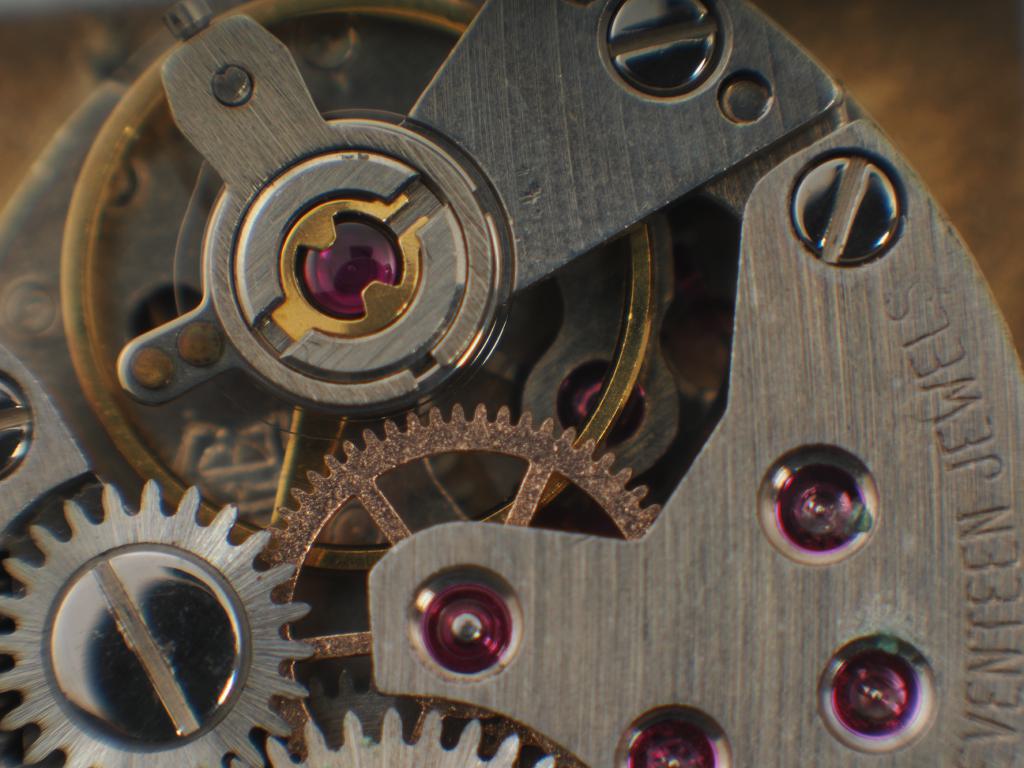
This is the movement of an old Meister Anker lady’s watch. The whole watch is the size of a fingernail, so the magnification here is somewhere around 1.5:1. If you want more, you need a veritable macro lens, such as the Sigma 150mm.
This can achieve 4:1 with the bellows at a working distance of 150mm, and in pretty good quality.
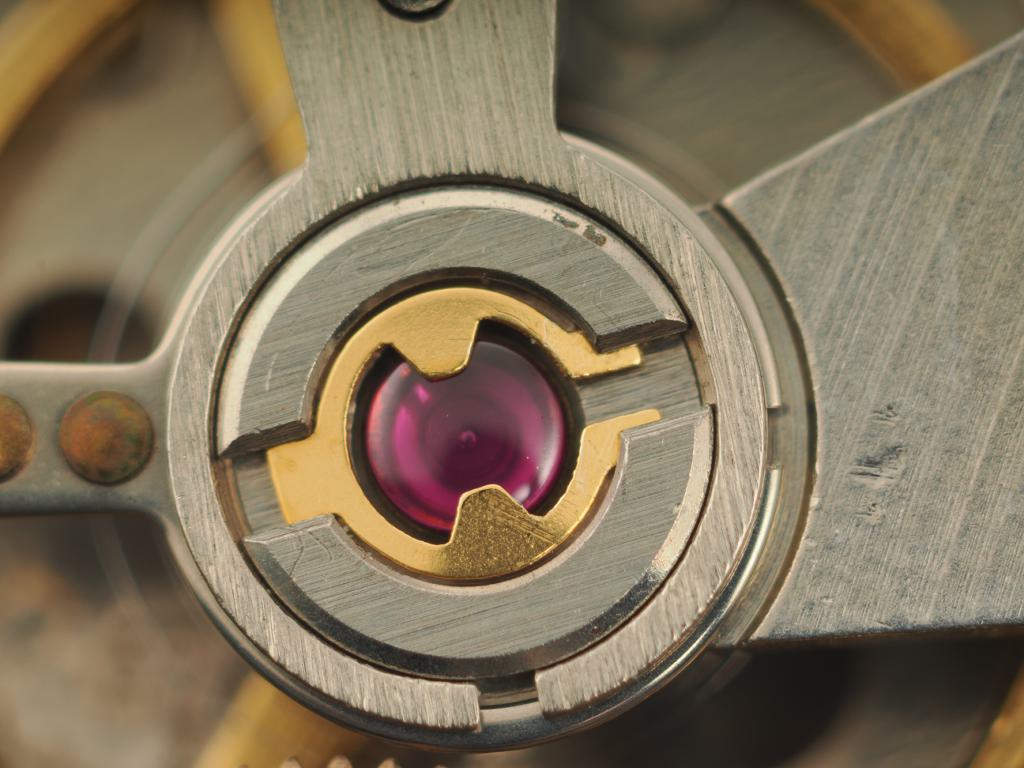
This is not a crop, but the full image from the 150 Sigma. Total image width roughly 4mm. The depth of field is of course ridiculous. Tenths of a millimeter. And you need a lot of light. The Sigma already loses a lot of light at the closest focusing distance. And in the bellows a whole lot of light is lost. Roughly speaking, there is a total loss of 6 f-stops in this picture. Of course, focusing is only possible with a magnifying glass and the slide. Here I have attached the bellows vertically to the studio tripod. That’s funny at 4:1. Although the tripod weighs a good 150 kilos and is correspondingly stable, the whole thing wobbles like a lamb’s tail.
Here’s another standard: the 1-cent piece. Not a crop either.
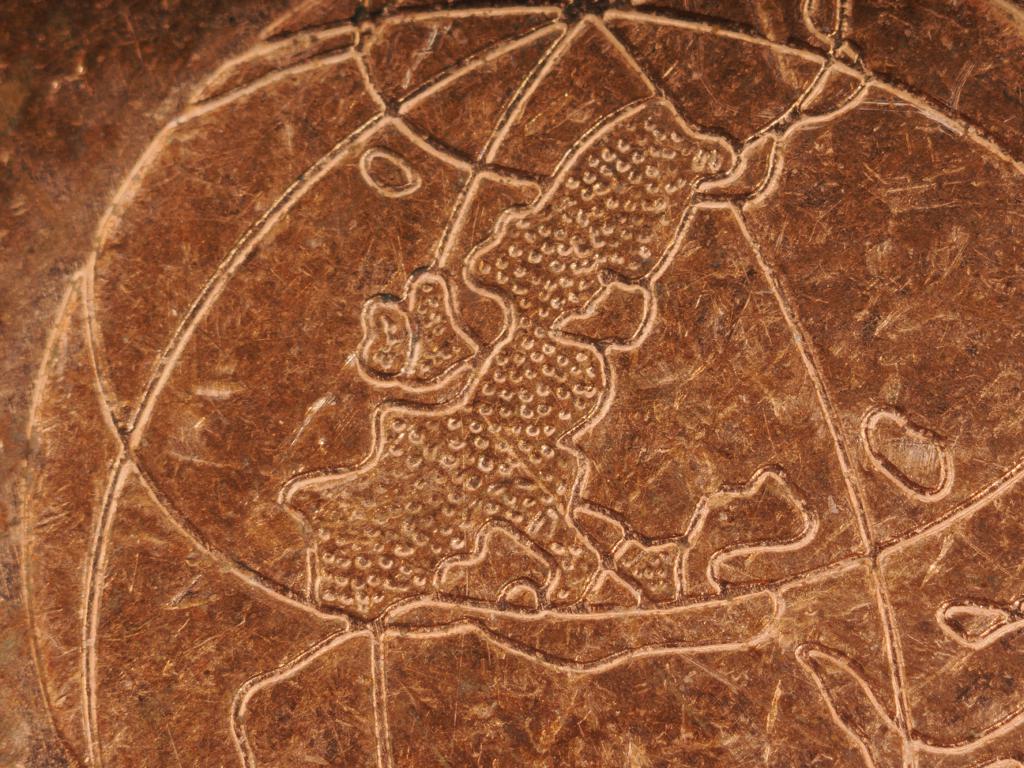
And finally a 1:1 crop.
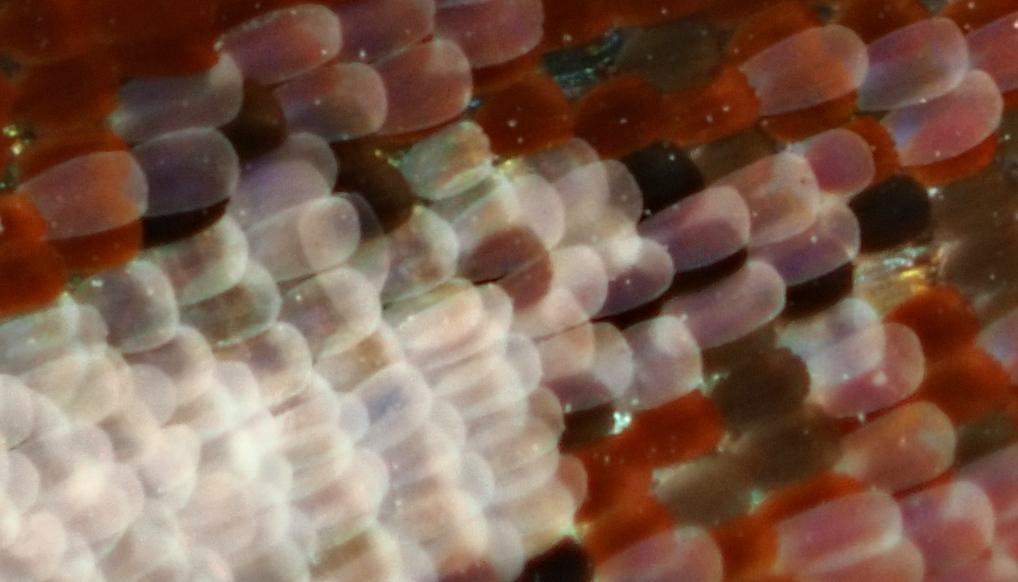
These are the scales on the wing of a peacock’s eye – No, I don’t catch butterflies. Sometimes I find some that have breathed their last – and then I save them for just such purposes. The width of the picture should be roughly 0.8mm….
The bellows are not cheap. It costs 849 euros. And a cent. If you don’t already have one, you’ll have to budget extra money for the macro slide.
The advantage over a stack of extension rings with looped contacts: Looks much cooler. Depending on the lens mounted, the whole thing with the bellows is also more stable. If you have a lens without a tripod clamp, a stack of extension rings with a macro on the front will wobble considerably. This is particularly important with the image scales involved. And you can vary the length of the bellows without having to take the extension rings apart. Comfort and style factor 100 points. On the other hand, the part is massive and not something you can stuff into your photo bag.
So it’s more for people who really mean business. A tripod is a must. And I mean a tripod. Not one of those “must be light and small” things. A solid concrete block is a good idea, anything lighter should be tried out first.
If you start building 2:1 macros or the 90mm macro on it, you should stop breathing when operating it….
Ich denke, das der Balgen nur noch zu ganz wenigen Freaks den Weg findet, weil es andere Möglichkeiten der Vergrößerung gibt.
Durch lange Belichtungszeiten scheidet es dadurch in der freien Natur fast aus, selbst mit Kältestarre der Insekten an einem fast windstillen Tag, haben meine ersten Serien Zeiten von 1 Sekunde pro Foto, ohne ZR oder ähnlichen.
Das 75er ist hervorragend für den Einsatz mit ZR oder Balgen geeignet, es erzeugt detailreiche Fotos bis F/18.
Mit dem 90er und Konverter hat man neue Möglichkeiten in diesen Maßstab vorzudringen.
Letztendlich bleibt nach wie vor der Crop, mit Hilfe von Software hatte ich ein 1700px großes Foto auf 4000px
gepumpt, gedruckt auf 1qm in Fürstenfeldbruck in der Ausstellung, es war sehr, sehr detailreich, und fand großes Lob auch von Naturfotografen anderer Marken. Inzwischen ist die Software noch besser geworden um extreme Maßstäbe zu realisieren.
Hallo Frank,
ich möchte die Gelegenheit nutzen, um einfach mal Dankeschön zu sagen.
Dafür, dass Du uns zeigst was mit unserem System möglich ist, wie es geht und vor allem ohne uns dabei zu verarschen. Dein Interview beim Firmen-Stammtisch war sehr beeindruckend, natürlich durch die Qualität Deiner Aufnahmen, noch mehr durch den gewährten Einblick in den Entstehungsprozess der Bilder aber besonders durch Deine Ehrlichkeit und den Aussagen, was man braucht und worauf man auch mal verzichten kann. Das war zumindest an dieser Stelle neu und unerwartet für mich und habe ich so auch nicht mehr – jenseits eines FolyFos – erlebt.
Deine Makros sind beindruckend, Deine Architekturaufnahmen ein stetiger Ansporn selbst zur Kamera zu greifen und Deine Portraits einfach zum Niederknien. Danke, dass Du uns daran teilhaben lässt.
Olympus und jetzt OMDS sind auf einem Irrweg, wenn sie nicht den Kontakt zu Leuten halten, die einerseits zeigen was mit dem System möglich ist, andererseits aber auch nicht verheimlichen, welche Arbeit damit verbunden ist, so ein Ergebnis zu erzielen.
Die Kunden sind ja nicht doof und können sehr wohl, spätestens nach ein paar Selbstversuchen, einschätzen, dass es mit einer tollen Ausrüstung oder einer umfangreichen Software allein noch nicht getan ist. Du legst die Messlatte verdammt hoch, jedoch ohne dabei andere zu frustrieren. Dein Wirken im Netz ist stets Ansporn und Motivation, dafür danke ich Dir und wünsche Dir noch lange viel Freude am Bildermachen und bleibe gesund.
Viele Grüße
Frank
Hallo Frank
Mir fehlen die Worte, ganz ganz herzlichen Dank.
Frank R. Hannover
Ein Balgengerät von Novoflex hatte ich auch mal an meiner damaligen OM 2 SP. Verglichen mit diesem hier war es spottbillig. Hatte auch keinerlei Automatik. Auch ein sogenanntes Schnellschussobjektiv von Novoflex hatte ich mal für ein Wochenende zum testen. Es hatte einen Brennweite von 200 mm, mit Konverter wurden daraus 400 mm. Das scharfstellen ging damit wirklich sehr schnell. Der Nachteil war, ich wurde von Passanten angeglotzt, als hätte ich ein Maschinengewehr umhängen.
Zum Schnellschussobjektiv fällt mir spontan nur ein inoffizielles Werbevideo ein, das vor mehr als 10 Jahren bei einem Usertreffen entstanden ist.
Reinhard, bitte den Link!
Das Noflexar habe ich öfters eingesetzt. Du meinst wahrscheinlich das hier:
https://youtu.be/qp7_kT8okbo
Ich hätte hier noch eines:
https://youtu.be/-IR9edHwa6Q
150 Kilo?
150 kg ist die Belastbarkeit.
Aber es gibt jetzt „das“ Stativ der Stative. Es ist sogar Adelig, es kommt „von Berlebach“:
https://www.berlebach.de/de/?bereich=details&id=593
Das ist ein leider sündhaft teures Meistestück…
LG Panomatic
Wieder was gelernt.